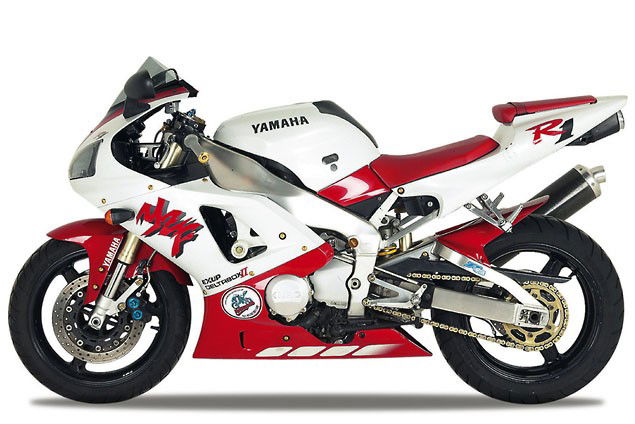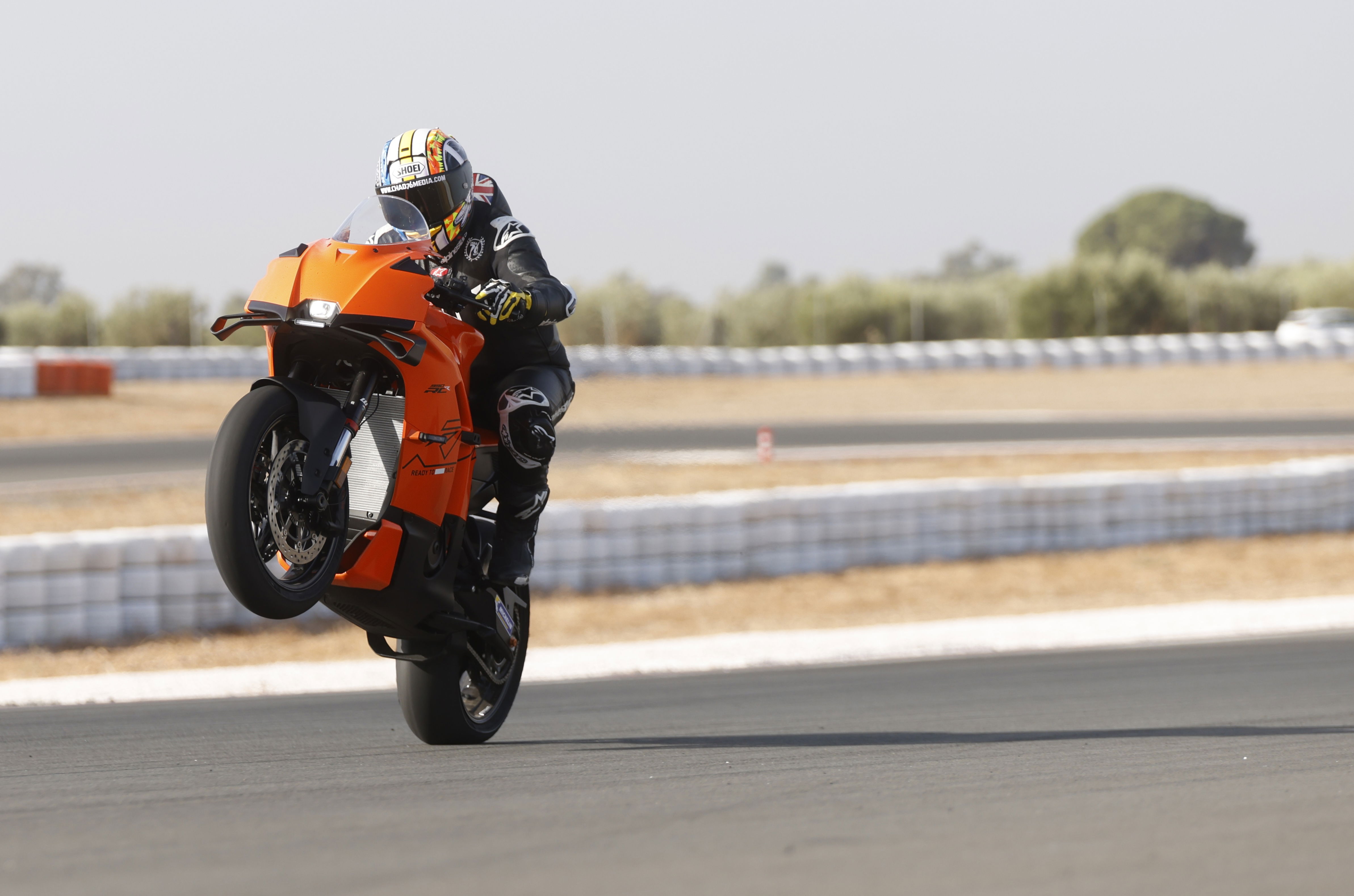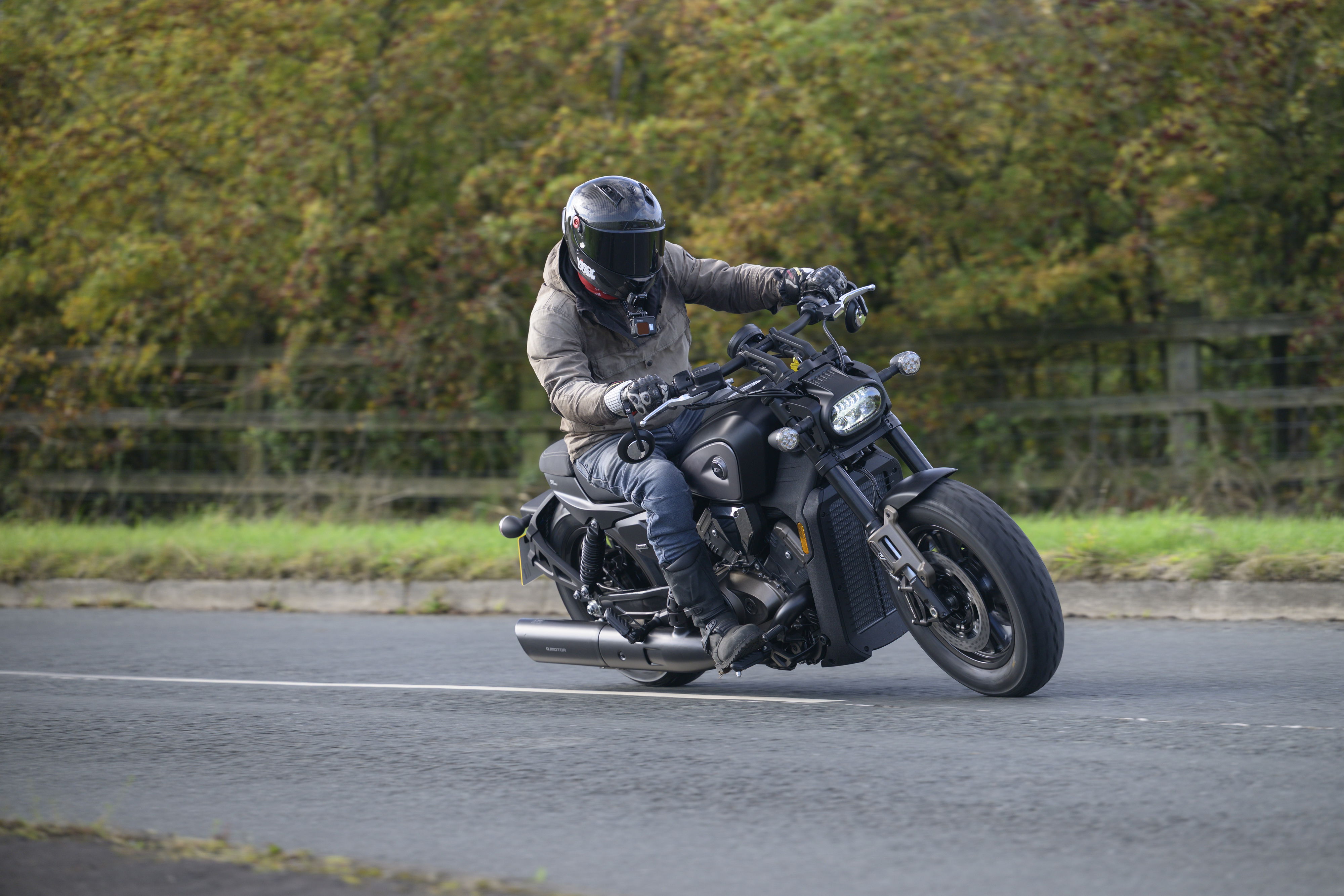1998 Yamaha R1 review
The original 1998 Yamaha R1 is, even by today’s standards, a gloriously fast and furious superbike. Back then it was staggering. Tempted? Here’s everything you need to know about buying, owning and riding this modern classic.


Yamaha managed to keep the fact they were building a 1000cc superbike to kick the FireBlade’s arse very quiet. In charge of the project was a young designer called Kunihiko Miwa, and rather than try and breathe new life into the YZF Genesis 750 motor or lighten the Thunderace’s massive lump, Miwa started afresh with the 1998 Yamaha R1, developing some radical new ideas.
Yamaha has long been a company known for its innovative approach to bike design, and the R1 was to be no exception. Miwa took full advantage of the vast R&D department, not to mention the lessons learnt in World Superbikes, to create a bike that would move the whole superbike class on.

Both the chassis and engine were developed simultaneously. The engineers were told to be inventive, to come up with new ideas, and if they were good then the project would use them. There were no hard and fast rules: the Yamaha R1 just had to beat the FireBlade, hence the then-unusual 1000cc displacement.
Yamaha had learnt with its YZF750 that while racing was important, it didn’t necessarily translate into sales. The Blade still outsold the YZF750 because it had more power, despite the fact it couldn’t race. When it was launched the 1998 R1 had the highest power-to-weight ratio of any production bike, and not just because of its huge power – the bike was also lighter and shorter than the competition. The reaction was amazing. For the first year you simply didn’t see an R1 in dealers because they were all sold out. More R1s were sold in the UK than anywhere else.

1998 Yamaha R1 Trivia
- It took Yamaha six years and a complete engine redesign before they beat the original bike’s 140bhp by more than 2bhp.
- Miwa’s last R1 was the 2002/03 model, before he handed the project over to Yoshikazu Koike, who designed the first underseat-pipe R1.
- Obviously aware of its theft potential, the R1 came with a plug built into the wiring loom to fit an alarm.
- Yamaha claimed the R1’s aluminium handlebars were designed to absorb vibrations to increase rider comfort.
- The R1’s headlights were designed to give the bike a ‘mean and intimidating’ stare.

What’s it like to ride a 1998 Yamaha R1 now?
The 1998 bike remains gloriously raw. Blip the throttle and the engine greedily sucks in fuel as the revs rise at an alarming rate. The engine sounds rough, aggressive and ready for action while the rest of the bike feels ultra-light. Before emissions laws and fuel injection took the edge off bike engines, this is how they felt: angry.
The claimed weight of 177kg, which in reality was 208kg with a tank of fuel, is still light even compared to modern bikes. The suspension is crude by today’s standards and the R1 is massively wheelie-prone. The whole R1 experience today is dominated by two things: a fantastic engine and a chassis that can’t quite keep it in check.
Open the throttle at low revs and the R1 pulls hard. Keep the throttle on, let the engine spin, and it just keeps on pulling, getting stronger and stronger. It’s a linear engine that puts to shame the peaky R1s of later years. On a smooth racetrack all is well, but get the original on a less than smooth road and it rapidly turns into a handful. Many owners fit a steering damper to the R1, and with good reason – the front end is very flighty.

Restoring a 1998 Yamaha R1
A new fairing, complete with tank and seat unit, will cost just over £1,300 (the top cowl alone is £408 and side panel £305 – yikes).
A re-spray is definitely worth exploring. When a painter quotes for a bike they have to take into account the number of decals and the complexity of the design. Thankfully the R1 is basically one colour per panel with a single sticker. Expect to pay about £700 for a full re-spray, but add about £200 if the fairing has a couple of cracks or a tank with a ding that needs fixing.
The number of parts for sale for 1998/1999 R1 on eBay is staggering. Budget about £80 for a panel/belly pan side and £60 for a mudguard. Complete fairing kits are available from China for £250. To restore metalwork to its original condition you need powder-coating. It’s cheap but you need to strip the bike down to barebone parts.
To refresh the suspension try K-Tech in Leicester. As well as working with the BSB grid they will refresh your R1 shock for £100 plus parts. But you’ll have to remove it and post it to them. The forks are best done locally as getting them out can be tricky. If you go standard, budget £150 labour and £30 for the seal kit.
An OE hanger and peg is cheap at about £30, but a stock exhaust is hard to find. Expect to pay about £200, which is better than £622 from dealers.
Aside from eBay, second-hand parts can be found through www.partfinderuk.co.uk, which will email your requests to scrap dealers across the UK and even some abroad.

1998 Yamaha R1 engine
Like the YZF750, the Yamaha five-valve head was retained, which had advantages for a high-revving engine, but the really clever part happened behind the cylinders. Yamaha moved the gearbox mainshaft above rather than inline with the crank, making the whole engine more compact and creating a stacked gearbox. The R1’s engine was 81mm shorter than the Thunderace’s.
To keep weight down the R1’s top crankcase and barrels were cast as one unit. Rather than use heavy iron liners the R1’s cylinders were covered in a patented ceramic surface, saving 1.8kg and reducing internal friction for more power. The R1’s engine was 9.5kg lighter than the Thunderace’s.
This lightened engine was also employed as stressed member within the Deltabox II frame.

1998 Yamaha R1 technical
Overall the R1 has a wheelbase of 1395mm, which is incredibly short, yet the R1 had the longest swingarm of any road bike.
Miwa understood that the longer the swingarm, the more drive the bike could put through the rear wheel. The forks had an extra stroke built into them providing 55mm of additional rebound travel. The theory was that this would help keep the front on the ground under acceleration.
Then there were the brakes, which were single castings for extra strength, and finally, and neatest of all, the gear linkage, which passes through a hole in the back of the frame spar.











